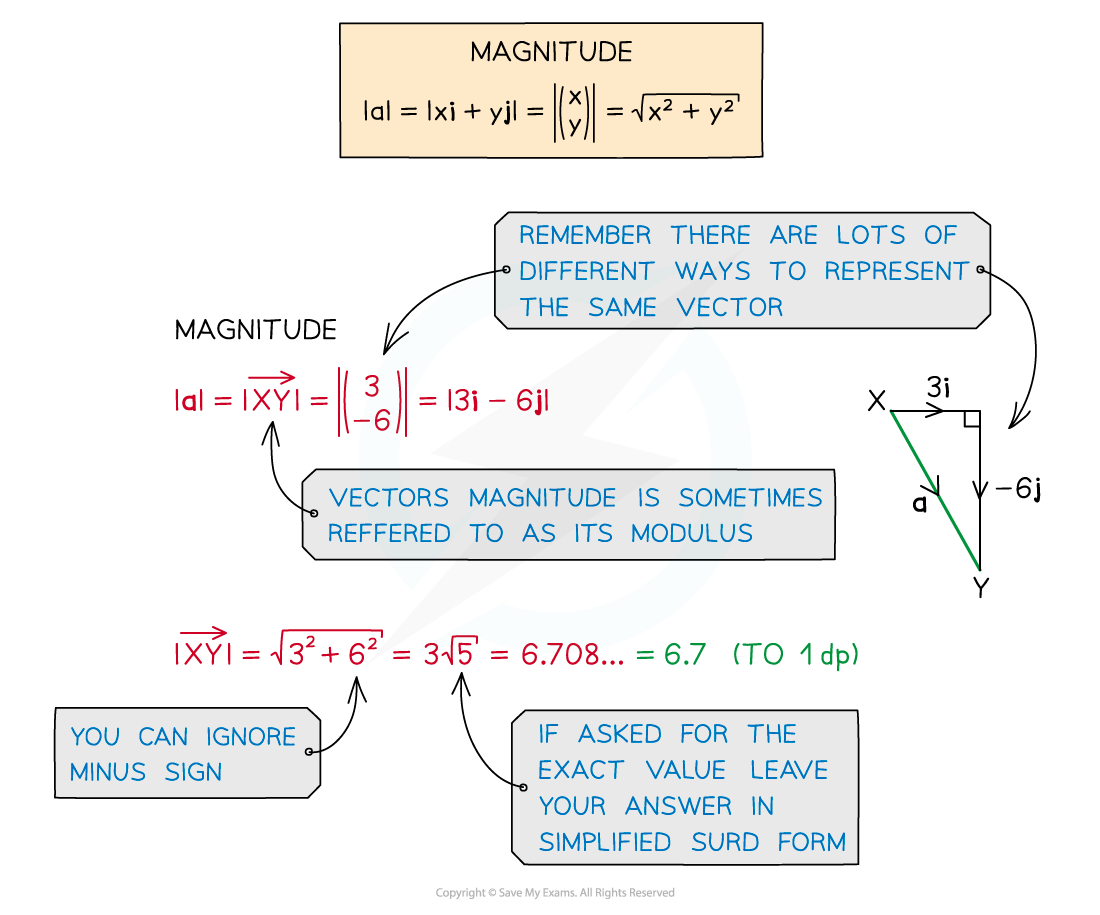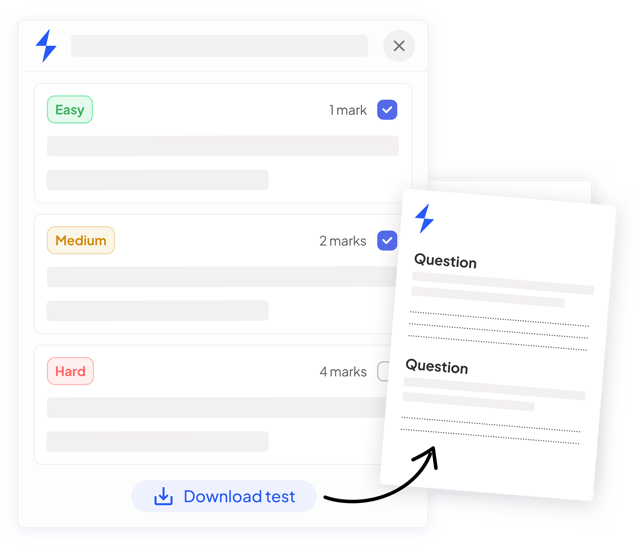Working with Vectors (Edexcel AS Maths): Revision Note
Exam code: 8MA0
Did this video help you?
Working with vectors
Vectors are used throughout mechanics to describe forces and motion
How are vectors used in Mechanics?
Vector questions are often embedded in a Mechanics context
Vectors will most commonly represent forces, accelerations or velocities, they can also represent displacement
Newton’s Second Law
is essential
Remember that
and
(force and acceleration) are vectors, while
(mass) is a scalar
When a particle is in equilibrium, the vector sum of the forces on it is equal to zero
What is vector notation?
There are two vector notations used in A level mathematics:
Column vectors: This is one number written above the other enclosed in brackets,
e.g. The (column) vector meaning 3 units in the positive horizontal (x) direction (i.e., right) and 2 units in the negative vertical (y ) direction (i.e., down) can be written as:
i and j notation: i and j are unit vectors (they have magnitude 1) in the positive horizontal and positive vertical directions respectively
e.g. The vector (-4i + 3j) would mean 4 units in the negative horizontal (x) direction (i.e. left) and 3 units in the positive vertical (y) direction (i.e. up)
As they are vectors, i and j are displayed in bold in textbooks and online but in handwriting they would be underlined (i and j)
How do I calculate a resultant vector?
Both column vectors and i, j notation can be used for calculating resultant vectors
Adding vectors together gives the resultant vector
This is the same when adding force vectors; the resultant force is simply the force vectors added together
Forces in equilibrium have a resultant force equal to zero

How do I calculate the magnitude and direction of a vector?
Pythagoras is used to find the magnitude of a vector.
Trigonometry is used to find the direction of a vector
You may be asked for the direction as a bearing. The unit vector j can be used to represent north and the unit vector i can be used to represent east.
In the case where k > 0
If a particle is moving north then its velocity will have a vector of kj
if a particle A is due south of another particle B then the displacement vector from B to A will have the form -kj
If a particle is moving east then its velocity will have a vector of ki
if a particle A is due west of another particle B then the displacement vector from B to A will have the form -ki
If the position vectors of two particles have the same j component, then the particle with the greater i component will be positioned due east of the other
If the position vector of a particle has equal i and j components then it is positioned due north - east of the origin
if a particle A is north – east of another particle B then the displacement vector from B to A will have equal i and j components

What does resolving vectors mean?
Resolving a vector means writing it in component form (as i and j components)
Given the magnitude and direction of a vector you can work out its components using trigonometry (SOHCAHTOA)
Worked Example
Two forces F1, F2 act on a particle P, F1 = -7i + 3j and F2 = 4i + 6j.
a) Find the magnitude of the resultant force R acting on the particle.
Leaving your answer as a simplified surd.

b) Find the bearing of the resultant force R.
Give your answer to the nearest degree.

A third force F3 = si – tj brings the particle into equilibrium.
c) Find s and t and state the force for F3 in terms of i and j.

Examiner Tips and Tricks
When working with vectors pay attention to accuracy, leaving magnitude in surd form or correct to 3.s.f.
In your exam you can’t write in bold so should underline your vector notation
Ready to test your students on this topic?
- Create exam-aligned tests in minutes
- Differentiate easily with tiered difficulty
- Trusted for all assessment types

Did this page help you?